#disabled activism
Explore tagged Tumblr posts
Text
literally!! and abled people are really disgusting towards people with down syndrome from calling them slurs all the way to straight up eugenics... it's so horrifying.
hey now that it’s disability pride month can you please remember to include people with Down syndrome and other chromosomal defects into your activism. they’re so often left behind. I literally never see anyone spreading Down syndrome awareness that isn’t close family of someone with Down syndrome. They exist and they’re living breathing humans who deserve just as much activism as every other disabled person
#congenital disability#down syndrome#disabled rights#disabled rant#disabled people#disabled person#physically disabled#disabled pride#disabled liberation#disabled life#disabled lives matter#disabled blogger#actually disabled#disabled and proud#disabled activism#disabled support#physical disability#disability activism#disability rights#disability#disabled
35K notes
·
View notes
Text
So much of what society treats as a joke is just mocking disability. Their idea of lazy is a disabled person trying to survive, whether that be living with their parents as an adult or using pre prepared food. Cringe culture is based entirely around mocking neurodivergent people and their interests. Symptoms and characteristics of disability such as urgency issues, drooling, tremors, tics, strabismus and speech impediments are used as cheap punchlines.
In children’s tv shows disabled characters such as those with speech impediments are treated as a joke, with symptoms of disability being portrayed as synonymous to stupid.
This idea is being taught from a young age in the media and it’s engrained into our language and culture. This goes beyond jokes, it contributes to the alienation of people with disabilities.
Once you start noticing these things you realise how constant and normalised it is.
Reducing an entire person to a punchline is wrong. Using a disability symptom as an insult is wrong. It’s disturbing how normalised it is to not treat people with basic decency and respect.
#disabled#disability#morbid midnight#cpunk#physical disability#neurodivergence#cringe culture is dead#cringe culture is ableist#ableism#disabled advocacy#disabled rights#cripple#angry cripple#cripple posting#crippled#cripple punk#tw ableism#ableist#disabled activism
4K notes
·
View notes
Text
anyone else ever wish they could lie down harder? Like, I'm already horizontal, but I need more horizontal. I need to be absorbed by the floor. I think that would fix me
#My orthostatic tolerance is currently zero#POTS#postural orthostatic tachycardia syndrome#me/cfs#fibromyalgia#chronic illness#disability#migraine#gastroparesis#chronic pain#chronic fatigue#chronic fatigue syndrome#myalgic encephalomyelitis#spoonie#mast cell activation syndrome#MCAS#dysautonomia#chronic migraine#joint pain#hEDS#ehlers danlos syndrome#hypermobility#hypermobile ehlers danlos#interstitial cystitis
43K notes
·
View notes
Text
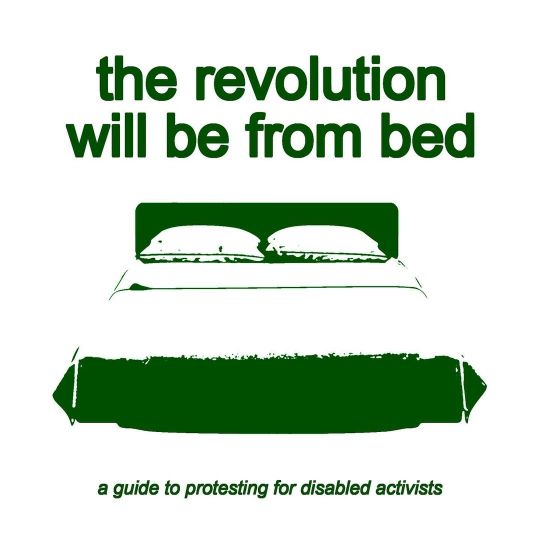
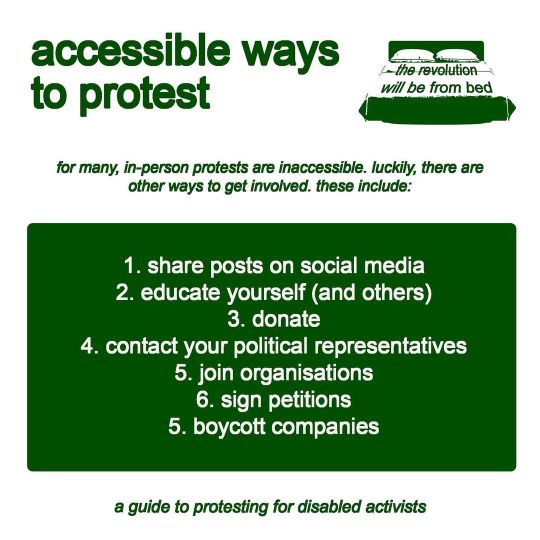
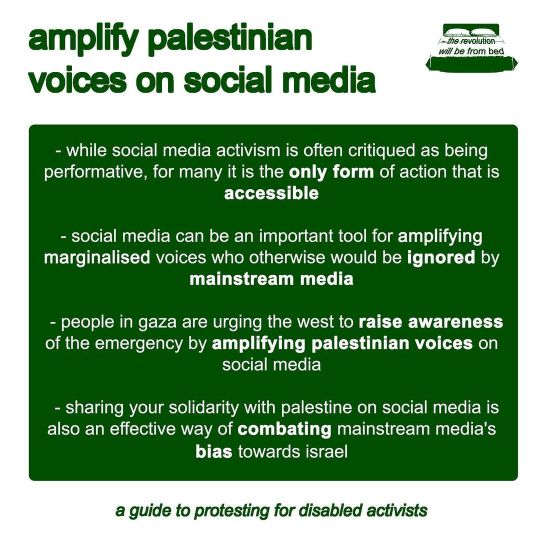
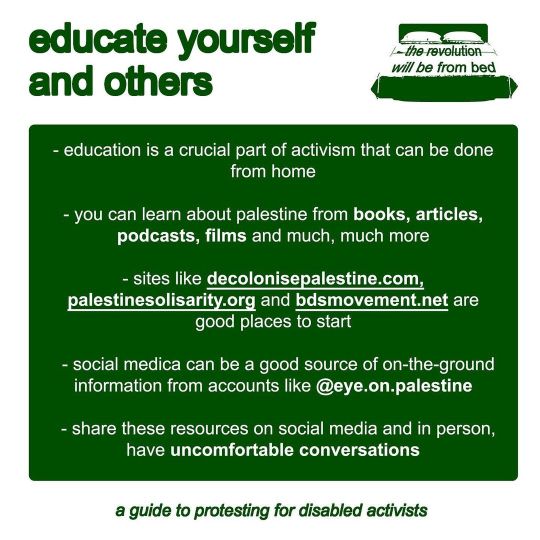
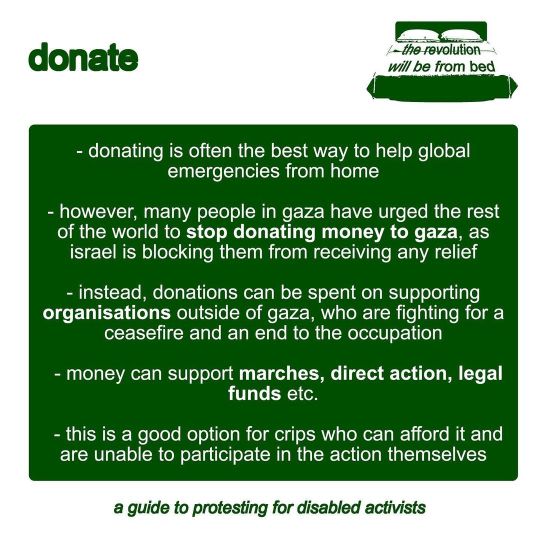
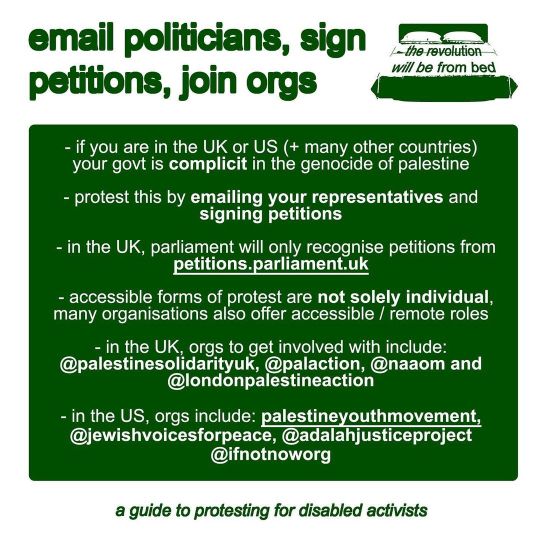
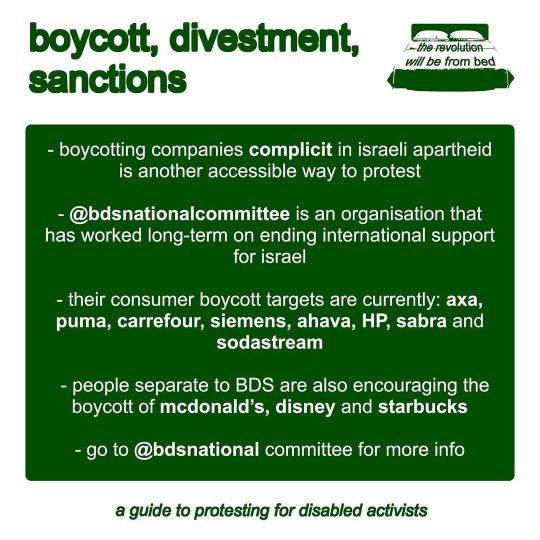
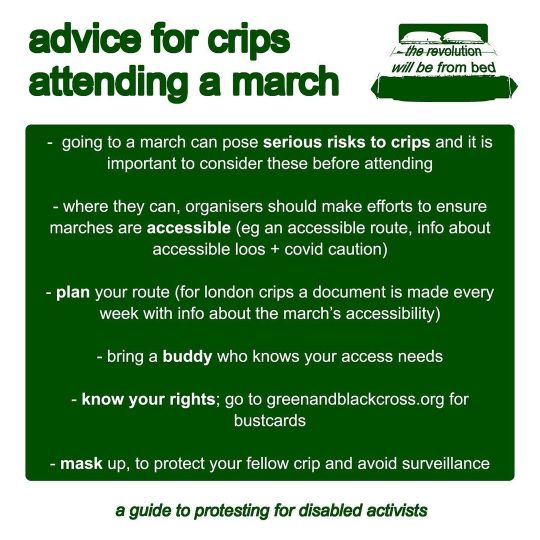

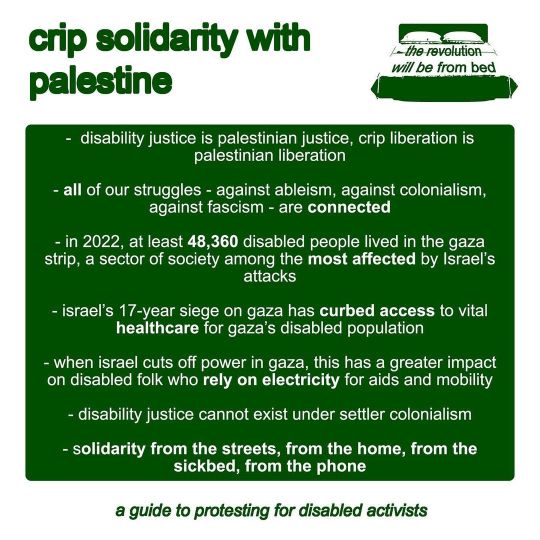
posted by cripthegig on instagram:
(finally) here’s the updated version of accessible ways to protest for palestine ! hopefully this will be more legible :) mentioned links and more accessible ways to support palestine in my linktree in my bio ! if you have any other suggestions about accessible action for palestine, please comment them below i’ve also amended a few outdated elements of the post. go to the original post’s comments for some really valuable extra insights on the topic ! note to say that nothing in this list will be accessible to all, it is merely a list of suggestions for more accessible action. the topic is incredibly nuanced and that can be hard to get across through the limited means of an infographic.
-
slide 1: an infographic with green imagery on a white background. dark green text at the top of the image reads ‘the revolution will be from bed’. in the middle of the image is a dark green outlined image of a double bed. in the bottom of the image is dark green smaller text that reads ‘a guide to protesting for disabled activists’
slide 2: an infographic with green imagery on a white background. dark green text at the top of the image reads ‘accessible ways to protest’. below the text, is smaller text in dark green that reads ‘for many, in-person protests are inaccessible. luckily, there are other ways to get involved. these include:’ the focus of the image is a dark green rectangle with white text inside it. the text reads ‘1. share posts on social media
educate yourself (and others)
donate
contact your political representatives
join organisations
sign petitions
boycott companies’ in the bottom of the image is dark green smaller text that reads ‘a guide to protesting for disabled activists’
slide 3: an infographic with green imagery on a white background. dark green text at the top of the image reads ‘amplify palestinian voices on social media’. the focus of the image is a dark green rectangle with white text inside it. the text reads ‘ - while social media activism is often critiqued as being performative, for many it is the only form of action that is accessible
social media can be an important tool for amplifying marginalised voices who otherwise would be ignored by mainstream media
people in gaza are urging the west to raise awareness of the emergency by amplifying palestinian voices on social media
sharing your solidarity with palestine on social media is also an effective way of combating mainstream media's bias towards israel’
at the bottom of the image is dark green text that reads ‘a guide to protesting for disabled activists’
slide 4: an infographic with green imagery on a white background. dark green text at the top of the image reads ‘educate yourself and others’. the focus of the image is a dark green rectangle with white text inside it. the text reads ‘education is a crucial part of activism that can be done from home
you can learn about palestine from books, articles, podcasts, films and much, much more
sites like decolonisepalestine.com, palestinesolisarity.org and bdsmovement.net are good places to start
social medica can be a good source of on-the-ground information from accounts like @eye.on.palestine
share these resources on social media and in person, have uncomfortable conversations
at the bottom of the image is dark green text that reads ‘a guide to protesting for disabled activists’
slide 5: an infographic with green imagery on a white background. dark green text at the top of the image reads ‘donate’. the focus of the image is a dark green rectangle with white text inside it. the text reads ‘- donating is often the best way to help global emergencies from home
however, many people in gaza have urged the rest of the world to stop donating money to gaza, as israel is blocking them from receiving any relief
instead, donations can be spent on supporting organisations outside of gaza, who are fighting for a ceasefire and an end to the occupation
money can support marches, direct action, legal funds etc.
this is a good option for crips who can afford it and are unable to participate in the action themselves’
at the bottom of the image is dark green text that reads ‘a guide to protesting for disabled activists’
slide 6: an infographic with green imagery on a white background. dark green text at the top of the image reads ‘email politicians, sign petitions, join orgs’. the focus of the image is a dark green rectangle with white text inside it. the text reads ‘- if you are in the UK or US (+ many other countries) your govt is complicit in the genocide of palestine
protest this by emailing your representatives and signing petitions
in the UK, parliament will only recognise petitions from petitions.parliament.uk
accessible forms of protest are not solely individual, many organisations also offer accessible / remote roles
in the UK, orgs to get involved with include: @palestinesolidarityuk, @palaction, @naaom and @londonpalestineaction
in the US, orgs include: palestineyouthmovement, @jewishvoicesforpeace, @adalahjusticeproject @ifnotnoworg’
at the bottom of the image is dark green text that reads ‘a guide to protesting for disabled activists’
slide 7: an infographic with green imagery on a white background. dark green text at the top of the image reads 'boycott, divesment, sanctions’ the focus of the image is a dark green rectangle with white text inside it. the text reads ' - boycotting companies complicit in israeli apartheid is another accessible way to protest
@bdsnationalcommittee is an organisation that has worked long-term on ending international support for israel
their consumer boycott targets are currently: axa, puma, carrefour, siemens, ahava, HP, sabra and sodastream
people separate to BDS are also encouraging the boycott of mcdonald's, disney and starbucks
go to @bdsnational committee for more info' at the bottom of the image is dark green text that reads 'a guide to protesting for disabled activists'
slide 8: an infographic with green imagery on a white background. dark green text at the top of the image reads 'advice for crips attending a march’ the focus of the image is a dark green rectangle with white text inside it. the text reads '- going to a march can pose serious risks to crips and it is important to consider these before attending
where they can, organisers should make efforts to ensure marches are accessible (eg an accessible route, info about accessible loos + covid caution)
plan your route (for london crips a document is made every week with info about the march's accessibility)
bring a buddy who knows your access needs
know your rights; go to greenandblackcross.org for bustcards
mask up, to protect your fellow crip and avoid surveillance’
at the bottom of the image is dark green text that reads ‘a guide to protesting for disabled activists’.
slide 9: an infographic with green imagery on a white background. dark green text at the top of the image reads 'a crip’s guide to packing for a protest’ the focus of the image is a dark green rectangle with white text inside it. the text reads ’ - a radar key to unlock accessible loos
medication (bring han expedie you're out for longer
energy sustaining drinks and snacks
earplugs / defenders for noise sensitivity
pain relief devices
check the weather - bring suncream / umbrellas and dress accordingly
a fully charged phone with a battery pack
a sunflower lanyard / pritned out medical information -a mask (ideally N95)
a bustcard for legal advice in case of arrest’
at the bottom of the image is dark green text that reads ‘a guide to protesting for disabled activists’.
slide 10: an infographic with green imagery on a white background. dark green text at the top of the image reads 'crip solidarity with palestine’ the focus of the image is a dark green rectangle with white text inside it. the text reads ’- disability justice is palestinian justice, crip liberation is palestinian liberation
all of our struggles - against ableism, against colonialism, against fascism - are connected
in 2022, at least 48,360 disabled people lived in the gaza strip, a sector of society among the most affected by Israel's attacks
israel's 17-year siege on gaza has curbed access to vital healthcare for gaza's disabled population
when israel cuts off power in gaza, this has a greater impact on disabled folk who rely on electricity for aids and mobility
disability justice cannot exist under settler colonialism
solidarity from the streets, from the home, from the sickbed, from the phone’
at the bottom of the image is dark green text that reads ‘a guide to protesting for disabled activists’.
2K notes
·
View notes
Text
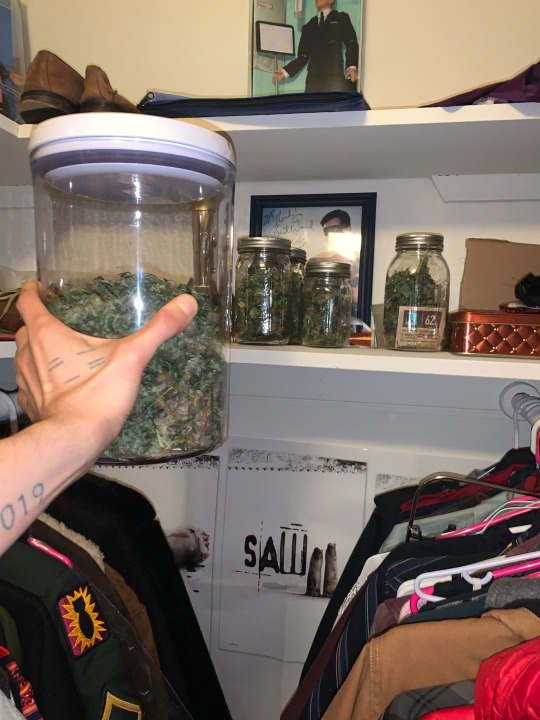


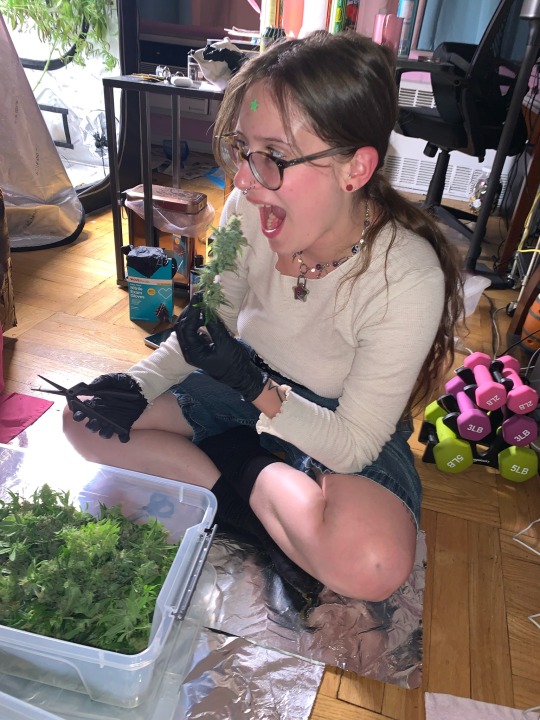
we finally harvested my two girls , frani and miranda 🪴🪴
lately i've been working on selectively breeding Zkittlez to make an ultimate anti-seizure / anti-autoimmune-disease-pain medicine .
#addisons disease#pernicious anemia#seizures#epilepsy#disabled activism#disabled autonomy#adrenal insufficiency
5 notes
·
View notes
Text

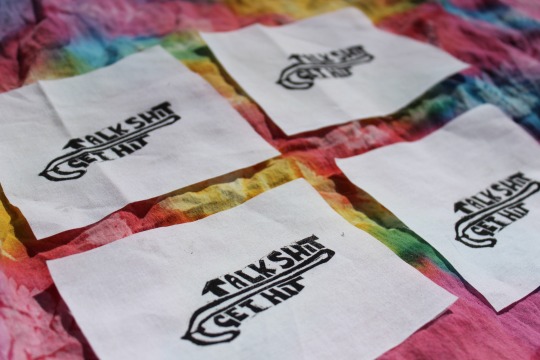
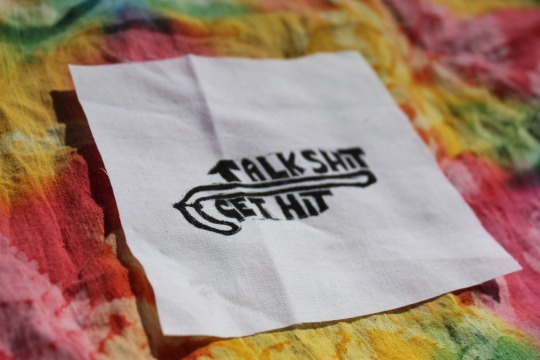
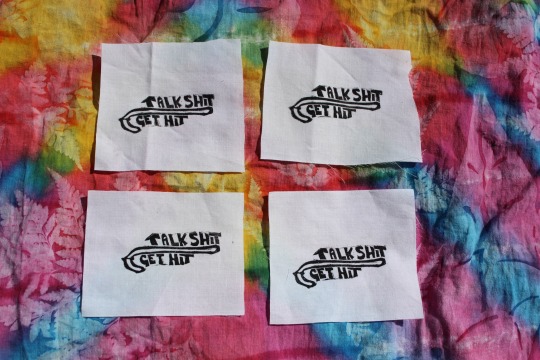
TALK SHIT GET HIT
Cripplepunks of the world, unite! We have nothing to lose but the shins of people who tell us we’re “too young” or “too healthy-looking” to use a cane or other mobility device. Slap this bad boy on your jacket or patch pants or what have you to tell those annoying commenters off.
more of my art | shop | tip
[description in alt ID]
#cripple punk#queer cripple#crip punk#spoonie#disabled activism#disability#cane user#cripplepunk#cane#mobility aid#artists on tumblr#disabled artist#disabled art#trans art#transgender art#queer art#queer#transgender#talk shit get hit#block print#block printing#linocut patch#suprart
88 notes
·
View notes
Text
I remember Rosie Jones talking about how humiliated she's been made to feel by people who exist under the guise of "helping." I've heard countless stories of parents of adult children with lifelong brain injuries being reassessed and told they "might" have the capacity to work.
Meanwhile, countless smart people have pointed out that a tiny tax increase—we're literally talking 3%—on the ULTRA-WEALTHY (not you on £100k; plot twist, you're Oliver Twist in their eyes too) would raise huge amounts from people who got rich off the labour and assets of this country.
I’m fucking tired of seeing "journalists" clutch their pearls when interviewing MPs like Nadia Whittome just for daring to suggest a wealth tax. It's not your money, bitch. Billionaires making millions in passive income aren't "working hard"; most come from wealth to begin with.
It's mind-blowing how normal people defend billionaires' wallets like they're their own—wallets fattened by a system designed so that those same defenders will likely NEVER climb out of their socioeconomic bracket. The sheer lack of education people have about capitalism, despite literally living under it, astounds me.
The GLEE British people have watching Starmer go after disabled folks, compared to their panicked outrage when a wealth tax is mentioned, is honestly the perfect example of how this country's "education" system has melted people's brains.
Frankly, it's embarrassing.
#politics#uk politics#capitalism#disability rights#disabled activism#working class#classism#keir starmer#labour#socialism#the best things about england came from democratic socialism and most of the divvys in this bastard country don't even know
22 notes
·
View notes
Text
hey google how can i connect with people through activism in person without completely draining myself or not being able to participate at all because my disabilities make it extremely difficult to make and maintain commitments. i would like meaningful connection and action and have hope sitting directly in front of me and i dont know where to Go.
#if anyone has advice (i am in the northeast USA) i am. all ears.#julian rants#disabled#disability#disability activism#disability advocacy#disability justice#disability rights#disabled rights#disabled activism
203 notes
·
View notes
Text
I've recently started being more open on social media about my chronic illness. My Instagrams used to be wiped clean of any mobilty aids or mentioned of them. I was supposed to be this healthy young adult in the eyes of others so I made it look like that.
My body moves without my permission, I have a tic disorder. Fibromyalgia has been a part of my life since I was 9. I can't remember not being in pain. My right leg has a limp, had for years. My cane means I can get around, get the mail every morning because I like doing so. My forearm crutches let me get around easier, get up the stairs in public. My wheelchair has become an extension of myself. I can actually go out to eat, to the mall, and so much more now
So I'm owning it now, I don't care what my ablest member of the family say. The ones who think I'm being dramatic. So now there's photos of me in my wheelchair on Instagram and I've never been happier.
#Wheelchair bitch#Lol#fibromyalgia awareness#Chronic fatigue#disabled activism#actually disabled#chronic disability#in a wheelchair#i'm a wheelchair user#functional tic disorder#tics mention#wheelchair user#ambulatory wheelchair user#forearm crutches#cane user#fibromyalgia#fibrolife#fibro problems
44 notes
·
View notes
Text
Disabled people are people. Therefore you can’t start touching me or grabbing my things without permission. If I say don’t touch me you do not ignore my wishes because I’m disabled. Just like any other person I have a right to autonomy over my body and my decisions. Unless you have been given permission or it’s an emergency, you cannot simply start touching me. I’m not an object I am a person. Being disabled doesn’t mean you, a random stranger get to make decisions for me. If it seems someone is in need of help ask them. If they say no you don’t then forcefully help them because you think you know better than them what they need.
#disability#disabled#cripple#chronic illness#mobility aid user#mobility issues#cripple punk#cpunk#angry cripple#disability advocacy#disability rights#bodily autonomy#human rights#disabled awareness#disabled activism
783 notes
·
View notes
Text
The concert is super great here is our view of the stage from the wheelchair accessible seats
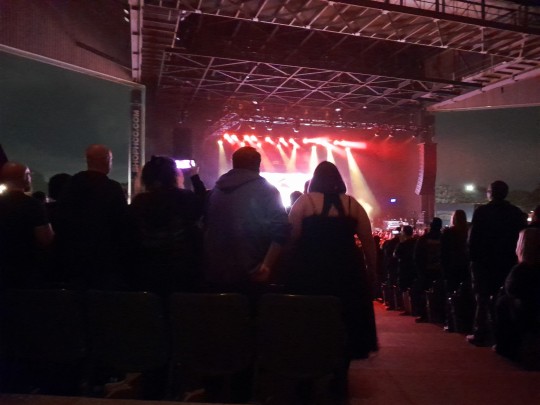
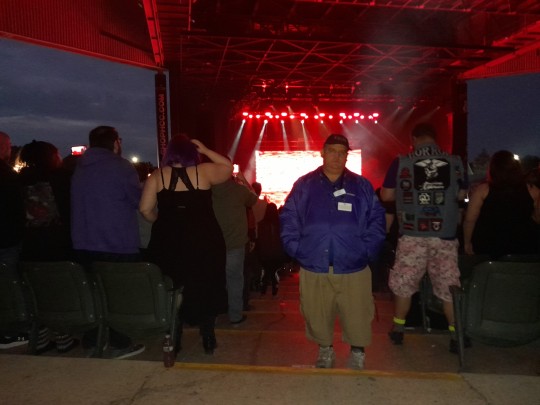
51 notes
·
View notes
Text
ok I’ve put together a list of disability-focused books for me read while I have the Seattle library ebook card. I’m not sure what order I’m going to read them in, yet. and obviously this list is non exhaustive, it’s just what I could find & deem worth reading from a surface level glance at the blurbs right now, while I have a migraine. i fully intend to explore other topics and revisit other titles im unsure about/prioritizing lower, I have them tagged separately on Libby.
if anyone would like to join me on this journey— be it by reading/listening to the books yourself at your own pace or just following my own posts about what I read— I’m going to come up with a tag for this journey. suggestions for that are welcome, I just want it to be a near-unique tag because tumblr search is awful
(most of the titles I have selected for this list at least make a notable effort to be inclusive and intersectional, if you’re worried about that. however, I have not read any of these yet, I cannot confirm anything about their actual content. I guarantee there will be excerpts worth critique from books on this list. part of exploring these heavy social topics is critical thinking.)
my current list is as follows, in no particular order:
Fat Girls Hiking by Summer Michaud-Skug — I’m interested particularly in modifying hiking (and other outdoor activities) to be more accessible for myself, as I love hiking but find it very difficult nowadays, the book seems to be at least decently disability-informed
The Future Is Disabled by Leah Lakshmi Piepzna-Samarasinha — disability justice for a better future that emphasizes the value of disabled folks. overall interested to see the perspectives and rhetoric presented in this book, along with:
Care Work by Leah Lakshmi Piepzna-Samarasinha — I don’t think I can do this one justice in a couple lines of tumblr text. read its blurb yourself, it includes: “a toolkit for everyone who wants to build radically resilient, sustainable communities of liberation where no one is left behind.”
My Body Is Not A Prayer Request by Amy Kenny — appeals to my experience living as disabled and intersex in a rural part of the Bible Belt in an evangelical household
Disability Pride by Ben Mattlin — gonna be honest, I threw this one in without reading its blurb. regardless of its quality, I believe I should read it based off title
Crip Kinship by Shayda Kafai — this book is based around an art activism project called Sins Invalid, exploring some of the messaging of it in a disability justice framework
Against Technoableism by Ashley Shew — from what I can gather, this book touches a lot on the social model of disability
Decarcerating Disability by Liat Ben-Moshe — prison abolition and decarceration with a disability focus
QDA by Raymond Luczak — QDA stands for queer disability anthology, also threw this one in based on the title
#disability#disabled#chronic illness#chronically ill#disability justice#disabled activism#intersectionality#disability studies#theory#idk what else to tag it in terms of actual search tags sorry#if you can’t access a copy of these books for any reason let me know I’ll see what I can do#I may go back and add better descriptions of these books when I don’t have a migraine#it’s not a massive pain migraine it’s more of a dizzy cognitive fog migraine#will create a better version of this list at some point anyway#lous clues
42 notes
·
View notes
Text
“I Support Disabled people”
-girly who has called a special interest cringe, made jokes about a stutter, finds tics “annoying”, gets impatient with slow talkers, refuses to use image descriptions or subtitles, makes fun of slow walkers, refuses to follow pandemic guidelines, gets angry at blunt points in conversation, doesn’t respect social boundaries, thinks ND people being in sexual relationships is “creepy” or “pedophilia”, talks over disabled people frequently
#ITS SO PERFORMATIVE#SOME OF YALL RLLY ONLY SUPPORT US IF OUR DISABILITY IS COMPLETELY INVISIBLE#also this applies to like. a lot of minorities it’s just that the disabled stuff has been on my brain#and I’m probably not the best person to speak on performative antiracism#ND#Disabled#Disability#Autistic#ADHD#tw ableism mention#tw ableism discussed#tw ableist language#Neurodiverse#disabled activism#tw pedophila mention
17 notes
·
View notes
Note
hello i just wanted to say i super appreciated your addition to the post about getting involved in your community and how it doesn’t always necessarily have to happen outside one’s home. i have been struggling with this a lot lately. i am neurodivergent and am severely socially anxious but i want to be more active in my community. do you have any tips for where i could get started with being involved from home? i really appreciate your time and wish you a lovely day 🌞
Sorry this took so long to reply to, life shit is an adventure lol
So the best advice I have, is that a lot of activism and outreach is NOT in fact going to protests. Protests are like the one night stand of activism. You show up for a night of passion, maybe you make some connections, maybe you work some stuff out of your system. But long term, lasting change, rarely happens directly because of just protests. So just right there, set aside any guilt about that being what “showing up” means.
Virtual courtwatching, mailer stuffing, phonebanking, cleaning up data to add to phone bank lists, printing fliers, working on websites, filling out grant applications, cooking for a mutual aid kitchen, tutoring, helping people with their resumes, fundraising, captioning or writing descriptions, translating materials…especially since covid, so much is done remotely on even a national level. The work that can’t be done from home is less than that that can.
Find groups you like, who are working on what matters to you. Meet the people over text or vidchat. Be honest about what you can and want to do and usually you’ll just get a list of the next sixteen courtwatch dates they need filled. Don’t be afraid to trust your instincts and not run with people if you don’t like their vibe. Not everyone knows what they are doing, not everyone has their own shit taken care of, and sometimes there are outside agitators or cops who try to provoke people into doing stupid shit. But by and large people are there for the right reasons and the people who are out there taking care of each other are some of the kindest people you will ever meet, if also some of the weirdest.
8 notes
·
View notes
Text

One of my local friends took me to look at library books recently. Here's one I chose to borrow! I've been wanting to explore this author for a while, now.
I'm surprised I was allowed a new card because a long time ago when I was in between places to live, I left a book I checked out with someone I thought was my friend and he would not return it after I had a manic episode, fled the state, etc.
The librarians waived my $40 fee, though. I thought that was incredibly nice! Just a reminder that even though some people suck, ultimately they can't hold me back from anything.
#journal#personal#pic#disabled#disability#disabledjoy#disabled activism#cripplepunk#disabilityactivism#albuquerque#library fun#booklover#vent#text#autism#actuallybpd#borderline#bpd
2 notes
·
View notes
Text
I need to say something and I need y'all to be calm
if it isn't actively bad or harmful, no representation should be called "too simple" or "too surface level"
I have a whole argument for this about the barbie movie but today I wanna talk about a show called "the babysitters club" on Netflix
(obligatory disclaimer that I watched only two episodes of this show so if it's super problematic I'm sorry) (yes. I know it's based on a book, this is about the show)
this is a silly 8+ show that my 9 year old sister is watching and it manages to tackle so many complex topics in such an easy way. basic premise is these 13 year old girls have a babysitting agency.
in one episode, a girl babysits this transfem kid. the approach is super simple, with the kid saying stuff like "oh no, those are my old boy clothes, these are my girl clothes". they have to go to the doctor and everyone is calling the kid by her dead name and using he/him and this 13 year old snaps at like a group of doctors and they all listen to her. it's pure fantasy and any person versed in trans theory would point out a bunch of mistakes.
but after watching this episode, my little sister started switching to my name instead of my dead name and intercalating he/him pronouns when talking about me.
one of the 13 years old is a diabetic and sometimes her whole personality is taken over by that. but she has this episode where she pushes herself to her limit and passes out and talks about being in a coma for a while because of not recognizing the limits of her disability.
and this allowed my 9 year old sister to understand me better when I say "I really want to play with you but right now my body physically can't do that" (I'm disabled). she has even asked me why I'm pushing myself, why I'm not using my crutches when I complain about pain.
my mom is 50 years old and watching this show with my sister. she said the episode about the diabetic girl helped her understand me and my disability better. she grew up disabled as well, but she was taught to shut up and power through.
yes, silly simple representation can annoy you if you've read thousands of pages about queer liberation or disability radical thought, but sometimes things are not for you.
#long post#long text#disability#chronically ill#chronic pain#cripple punk#cripplepunk#chronic illness#disability activism#trans#transgender#queer theory#queer punk
67K notes
·
View notes